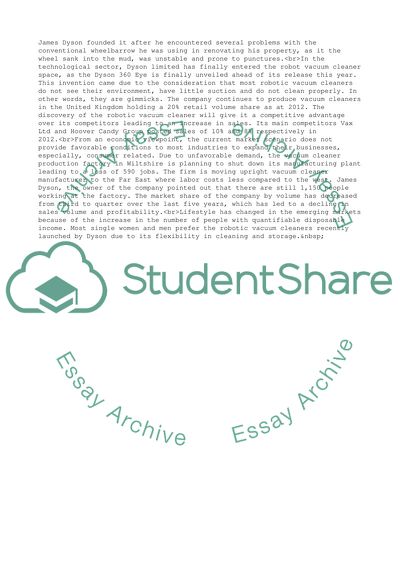Cite this document
(“Corporate Strategy for Dyson Limited Assignment”, n.d.)
Corporate Strategy for Dyson Limited Assignment. Retrieved from https://studentshare.org/business/1685861-corporate-strategydyson-a-distinctive-company
Corporate Strategy for Dyson Limited Assignment. Retrieved from https://studentshare.org/business/1685861-corporate-strategydyson-a-distinctive-company
(Corporate Strategy for Dyson Limited Assignment)
Corporate Strategy for Dyson Limited Assignment. https://studentshare.org/business/1685861-corporate-strategydyson-a-distinctive-company.
Corporate Strategy for Dyson Limited Assignment. https://studentshare.org/business/1685861-corporate-strategydyson-a-distinctive-company.
“Corporate Strategy for Dyson Limited Assignment”, n.d. https://studentshare.org/business/1685861-corporate-strategydyson-a-distinctive-company.


